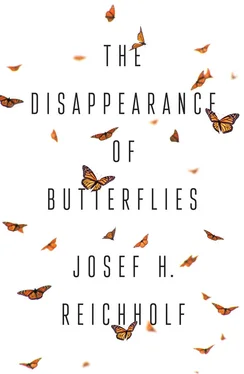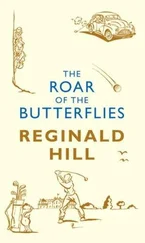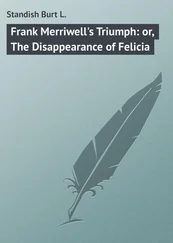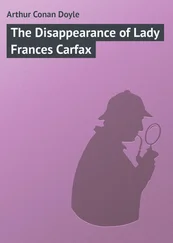In this state, and in the next stage following the first moult, the caterpillar is moistened by the water in its tiny leaf tube. It breathes through its skin. The breathing holes, the spiracles and the trachea already exist, but remain closed in the first two stages of the caterpillar’s life. Later on, air will be drawn through them into the body and the excreted carbon dioxide expelled. After the first moult, the caterpillar fashions for itself a proper leaf tube with base and lid. This also contains water and the caterpillar continues to breathe through its skin. However, this changes when it reaches the third larval stage. The caterpillar, having moulted the skin that had become too small, now shimmers as if made from silk. Water droplets run down its skin. It stretches its head above the surface of the water and is immediately enveloped in a gleaming silver layer of air. It fashions the new case of such a size that it can completely withdraw into it. It is filled with air. The body of the caterpillar will now remain hydrophobic until pupation. The spiracles are open. Now the exchange of respiratory gases takes place in the normal manner, but with a significant peculiarity: if the carbon dioxide level rises in the air bubble that surrounds the caterpillar, then a portion of it will automatically pass over into the water. This is because carbon dioxide ‘readily’ dissolves in water, as chemists will casually declare. The resulting lowered pressure is offset by the oxygen, which in turn penetrates the air bubble surrounding the caterpillar. The caterpillar thus breathes in part with something resembling a physical lung. This is not yet essential, since, from the third larval stage, the caterpillar of the brown china-mark eats the floating leaves from the top down. In doing so, it absorbs their waxes, which are responsible for ensuring that the top surface of the leaf does not become wet but instead floats on the water. Without this waxy surface, an ordinary rain shower would be enough to submerge the leaves.
How the caterpillar breathes under water
The addition of wax to the diet allows the caterpillar to move from the wettable to the unwettable (or hydrophilic to hydrophobic) next stage. Wax is secreted across the whole outer surface of the body of the caterpillar from tiny cone-shaped structures, the sides of which are deeply grooved and become filled with wax. That is why the caterpillars have such a silky sheen during their unwettable stage. Only the head and its connection to the body are not covered with such a wax layer. This is very important because if the head also repelled water, the surface tension would constantly push it away from the wet leaf and the caterpillar would barely be able to eat. The change from skin-breathing to air-breathing through the tubular system typical of insects, the spiracles, therefore characterizes the life of the caterpillar of this aquatic moth. It gets really exciting when the caterpillar is fully grown and ready for pupation. It does not crawl with its leaf case to land, although this might be the most practical solution from a human perspective, but instead labours downwards, along the stem of the water plant, struggling to overcome the buoyancy of the air-filled case. When it has reached a water depth of 10–30 centimetres, it bites a few small holes into the stem of the pondweed or water-lily plant, on the leaves of which it has been feeding, attaches the case by spinning a few fine threads, and transforms itself into a pupa. There, inside the air bubble, the pupa frees itself from the final caterpillar skin by light movements of its abdomen.
Then it rests until the internal transformation into a butterfly has been completed. Since this metamorphosis, which appears so quiet to the outside world, requires a great deal of energy, the pupa must breathe. This would lead to a shortage of air in the pupa case if the caterpillar had not tapped into the air tubes of the water plant. These tubes supply the roots of the plant with the oxygen they need, and the pupa obtains oxygen from them. Since carbon dioxide produced in the transformation process dissolves in the water that surrounds the leaf case, a lower pressure is created. This in turn causes air to be sucked down along the plant stem. In contrast to the caterpillar, which floats on the water surface in its air-filled vessel and can replenish its air directly, the pupa is dependent on the plant for its air supply. It is even possible that the leaves that remain green in the water carry out photosynthesis for longer, just to provide oxygen to the air bubble of the pupa. The highly complex problem of how an air-based animal can breathe under water is therefore solved in different ways: an adaptive achievement that one can only wonder at.
Up and away in an air balloon
The most impressive moment of all is when the moth emerges from the pupa. There is the moth, enclosed in the floating leaf case, 20–30 centimetres under water. It then pushes open the top of the leaf case. The escaping air bubble drags the moth up to the water surface, like a hot air balloon with its basket. At the surface the bubble bursts, and Nymphula emerges from the water. Immediately, a coating of long scales spreads out on the surface around the moth. Supported by the surface tension, it searches tentatively for the next leaf by probing with its legs. Once it finds a leaf, it crawls onto it and pumps up its wings until they are completely unfurled. The moth often emerges in the morning, but it can also hatch late in the afternoon and in the early evening. The newly hatched moths seek the cover of the plants on the bank as soon as they can fly.
There they attach themselves with their head pointing down, in what is for them a very characteristic pose. Seen from the water, as well as from the perspective of a bird hunting in the reeds for insects, this position conceals much of the shape of their body. One can only recognize that they are moths if one looks into the reeds at approximately the same level. But even then, the fine pattern of yellowish whorls and darker spots impedes visual detection. At the periphery of the reed bed, it remains damp enough on hot days for the small bodies not to dry out. Avoiding desiccation is particularly important for the males, as they must often spend several evenings and perhaps a whole week waiting to find a freshly hatched female that is ready to mate. It is less important for the females, since they die shortly after laying their eggs.
Only once have I been lucky enough to witness the emergence process in an aquarium. I already knew roughly how it would happen, since how else would the moth be able to reach the water surface from its underwater case? But as I saw it for myself, it was still as if a miracle had taken place.
When the adult emerges, it is midsummer. According to the type of weather experienced in spring, the second generation of brown china-marks hatches later in July or August, sometimes even at the beginning of September. What happens next? They must survive the winter. Overcoming this difficulty necessitates a special extra stage in the second lifecycle of the year. The caterpillars that are still wet from the water do not enter the third stage that would make them waterrepellent in autumn, but instead crawl without a leaf case down the stem of the water plant to a depth of at least 30 centimetres below the water surface. There they bite a hole, provided the stem is thick enough, excavate a narrow, oblong cavity and draw themselves into this chamber, their shape bent crooked at one end like the handle of a walking-stick. In this manner they spend the winter months until April or the beginning of May, when the water plants begin to sprout new leaves. Any floating leaves still on the surface of the water die away late in autumn. The caterpillars hibernate inside the plant stems, even if ice forms on the water above them.
Читать дальше












